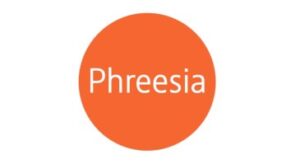
Nvidia has announced the resumption of sales for its H20 GPU chips in China, contingent upon approval from the United States government. This move comes alongside the introduction of a new RTX Pro model that complies with Chinese regulations, specifically targeting sectors such as artificial intelligence (AI) in logistics and smart manufacturing.
Nvidia’s Strategic Moves in China
The decision to restart H20 GPU chip sales follows a meeting between Nvidia CEO Jensen Huang and officials from both the U.S. and Chinese governments. Discussions focused on enhancing collaboration in the AI realm, showcasing Nvidia’s adaptability to the shifting global regulatory landscape. The company aims to penetrate the Chinese market while navigating the recent export restrictions imposed by the U.S. government.
As part of its strategy, Nvidia is keen on supporting various industries with its advanced AI technologies. The newly launched RTX Pro GPU is designed to meet the compliance requirements set forth by Chinese authorities, allowing companies to leverage AI for increased efficiency and innovation.
SpaceX Invests Heavily in AI with xAI Funding
In a significant development, SpaceX has committed $2 billion to xAI, a company founded by Elon Musk. This investment marks the first major external funding for xAI, contributing nearly half of the $5 billion raised recently. The funding will be directed towards integrating AI capabilities into Musk’s various ventures, including Starlink, Tesla’s robotics division, and the X social media platform.
The collaboration between SpaceX and xAI positions Musk’s companies at the forefront of AI innovation. The merger of xAI with X is expected to create a powerful AI-driven technology ecosystem, enhancing the capabilities of Musk’s enterprises across multiple sectors.
Meanwhile, the Indian IT industry is facing challenges as entry-level job opportunities decline due to increased automation and outdated educational frameworks. Major firms such as Wipro and Infosys have scaled back hiring for fresh graduates, focusing instead on candidates with specialized skills and domain knowledge. This shift has left many engineering graduates struggling to find employment, highlighting a disconnect between industry demands and educational outcomes.
Despite these challenges, there is optimism for growth in AI-related job sectors. Industry experts advocate for curriculum updates to better align education with market needs, potentially improving employment prospects for future graduates.
In a further demonstration of technological advancement, users of Gemini Pro and Ultra can now create eight-second AI videos from still images using the new Veo 3 model. This feature, available on both PC and mobile platforms, allows users to upload a photo and provide detailed prompts regarding motion, setting, camera angles, and sound. Each generated video is watermarked with SynthID to ensure transparency, enhancing the storytelling experience and making AI video creation accessible for subscribers.
Lastly, a new AI model has emerged that identifies three meme coins—Fartcoin, Bonk, and Popcat—as potential breakout candidates for late 2025. These coins are noted for their community-oriented governance and transparent tokenomics. While speculative in nature, their underlying fundamentals and on-chain traction may present high-risk, high-reward opportunities for investors looking beyond mainstream market trends.
As the technology landscape evolves, these developments from Nvidia, SpaceX, and the broader industry reflect a dynamic interplay of innovation, regulation, and market adaptation.







